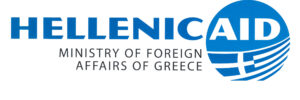The 2030 Agenda and the Sustainable Development Goals (SDGs) adopted in 2015 are a universal plan of action for humankind. Yet, four years after their adoption many countries are not yet on track to meeting the SDGs by 2030. For many goals, particularly relating to social inclusion and environmental sustainability, some countries are actually moving further away from the targets.
Meeting the SDGs will require sustained long-term investments and coherent policies. Transformations towards achieving the SDGs will require greater levels of public and private investments in all of the SDGs, including human capital (health and education), social protection, clean infrastructure and industry, urban management, and environmental protection. Success will also require greater efficiency in investments and above all coherent policies and governance frameworks to ensure that the long-term goals can be met.
Governments need to develop actionable strategies and leverage all available governance tools in order to reach the transformative goals of the 2030 Agenda. Evidence shows a number of important steps to achieving these changes, in particular: translating the SDGs into quantitative, time-bound national objectives and benchmarks; devising long-term strategies for meeting them; and aligning policy frameworks and governance mechanisms with these strategies.
This reflection paper explores how strategic design and public management practices and procedures can be leveraged to help achieve the long-term pathways towards the successful implementation of the SDGs.
Section 1 drawing mostly from SDSN work, discusses how transformations to achieve the SDGs might be designed and implemented over the long term. Key elements include: 1) setting transformative, quantified and time bound targets; 2) designing long-term pathways and intermediate strategies in collaboration with key stakeholders; 3) Strengthening monitoring mechanisms.
Section 2 based mostly on the work of the Public Governance Directorate of the OECD, discusses how public management practices and procedures can be mobilised to support strategic orientations in the context of the SDGs. This includes: 1) ensuring a whole-of-government and whole-of-society approach to the SDGs 2) fostering long-term, sustainable thinking and action beyond electoral cycles, and 3) leveraging governance tools such as the budget and public procurement for effective SDG implementation.
More information: https://unsdsn.org/wp-content/uploads/2019/07/OECD_SDSN-Working-Paper_2019_Final.pdf
